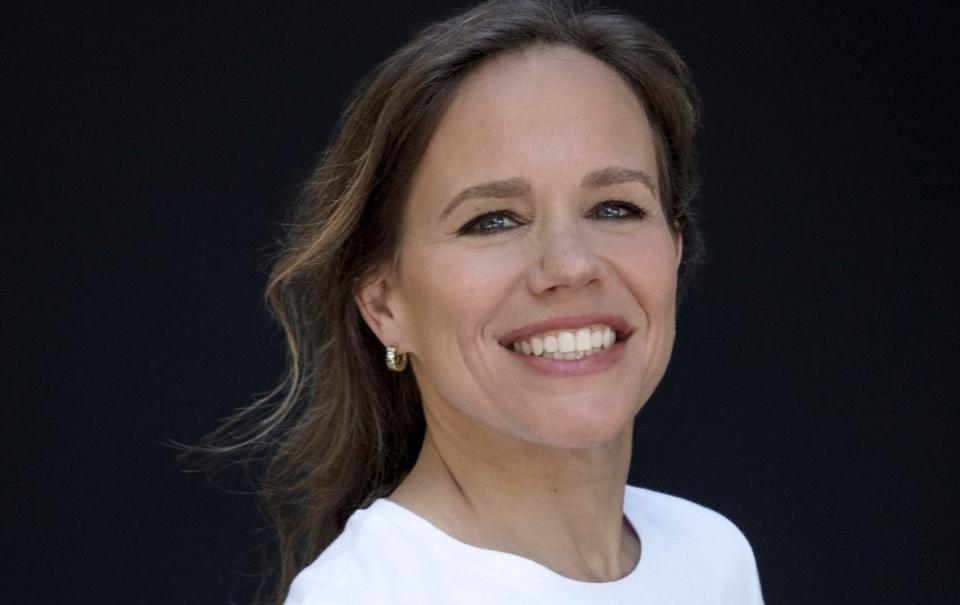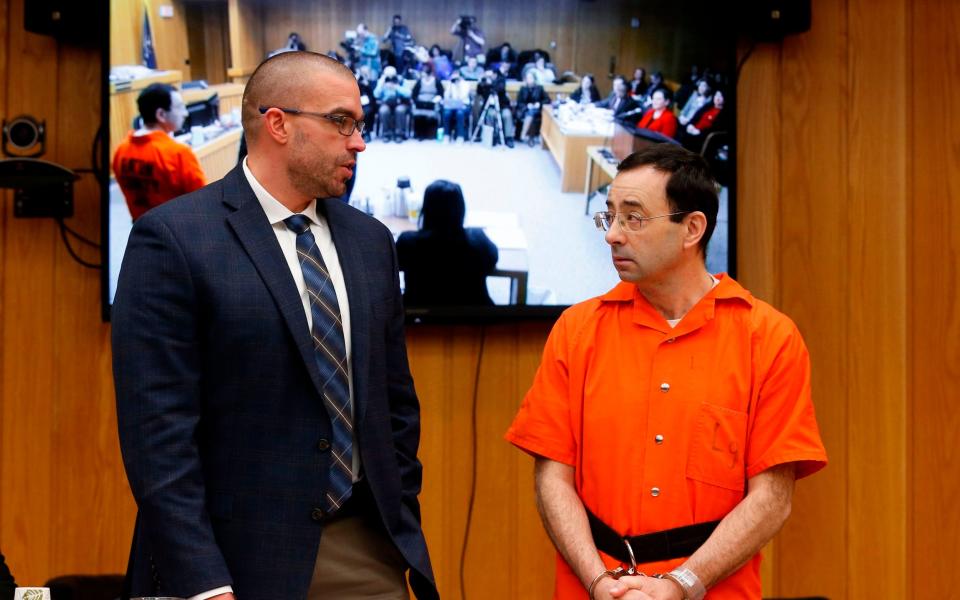The sinister side of gymnastics: 'I knew I couldn’t survive another day'

Gymnasts nickname it the ‘the twisties’ – the daunting, ever-present risk of losing your bearings in mid-air, forcing you to flail about in a dizzying confusion while trying to land on two feet.
This is what appeared to strike Simone Biles, perhaps the greatest gymnast in history, at Tokyo’s Ariake Centre on Tuesday. The 24-year-old started off well, gliding up to the vault with her trademark grace, before attempting the Amanar, a particularly difficult manoeuvre involving two-and-a-half mid-air twists. But after just one-and-a-half, Biles faltered. Getting lost in the air feels like being thrown around on a fairground ride, gymnasts say; it soon becomes difficult to distinguish between the floor and the ceiling.
After receiving a disappointing score, Biles walked away from the event – and later stunned the Olympic world by pulling out of the women’s all-around final altogether. At a dramatic press conference, the five-time gold medal-winner made clear that her decision was about much more than one disappointing jump. “I don’t trust myself as much as I used to,” she explained. “I wanted [the Olympics] to be for myself, but I... felt like I was still doing it for other people. I say put mental health first, because if you don’t then you’re not going to enjoy your sport and you’re not going to succeed.”

Biles later retweeted a message from a supporter, reminding fans that she was “molested by her team doctor throughout her entire childhood and teenage years” – a hint that her current psychological difficulties are linked to the abuse she suffered at the hands of Larry Nassar, the former USA gymnastics national team doctor. In 2018, Biles was one of 265 women and girls to come forward with sexual assault claims against Nassar, a geeky-looking father-of-three who abused gymnasts for three decades, usually under the pretence of a medical exam. He was “someone I was told to trust”, Biles said at the time.
Spurred on by Netflix’s Athlete A, a documentary about Nassar’s downfall released last summer, the gymnasts banded together under the ‘Gymnasts’ Alliance’ campaign, pushing to end the culture of perfectionism, abuse and hero-worship of coaches – a system they believe allowed predators like Nassar to flourish.
One woman who felt particularly moved by Biles’s decision is Athlete A producer, Jennifer Sey, a 52-year-old mother of four, who watched the news from her San Francisco home. In the 1980s, Sey became a household name in the US after devoting her childhood to gymnastics. By age seven she was competing in national competitions; by 10 she was on the US women’s team. But she grew to resent what she now describes as a dark underbelly of physical and emotional abuse, one that left her with decades-long psychological scars.
“[Biles is] the greatest gymnast of all time. It takes a lot of courage to say, ‘I’m not going to do this, it’s not safe for me’,” Sey tells me over the phone. “This young woman has competed through injury, kidney stones, sexual abuse, the intense pressure that she is the best in the world. She never paused.”

As a young child, Sey always felt there was something magical and transcendent about gymnastics. She remembers “turning cartwheels” on her parents’ lawn in New Jersey; and being “enamoured” with 14-year-old Romanian legend Nadia Comăneci at the 1976 Olympics. “It’s hard to explain to people how much fun it is when you’re little and you’re flipping around.”
Her childhood career “escalated quickly”. By 13, she was training before and after school, up to 60 hours each week. The hardest part was the constant pressure to lose weight. Terrified of the twice-daily “weigh-in”, Sey remembers filling a cup with spit each night to lose “water weight”. One evening she was chastised by a coach for eating a “whole bagel” for dinner. Another young gymnast was shamed over the loudspeaker for putting on 2lbs. “At this rate you’ll look like your mother in no time,” the coach shouted. The girl’s mother, listening from the stands, did nothing.
It pushed Sey into a cycle of bingeing and purging, plus an addiction to laxatives that at one point caused her to soil herself in public. She didn’t menstruate until her 20s, due to malnourishment.
“It was viewed as a very young girl’s sport, with a narrow window of opportunity. Once you hit puberty, it was considered to be over. Young, thin body types became the expectation. I think with that came an immaturity and obedience which worked in favour of domineering coaches,” she says.
Just 10 days after breaking her ankle, Sey was told by her doctor (who mostly “did the bidding” of coaches) that she could return to practice. It inflicted long-term damage to her bone, something she only became aware of after getting an MRI scan in her 40s, when “the doctor asked me if I’d been in a car accident.”

She revealed her story in her explosive 2008 book, Chalked Up. Most controversial was her allegation that a small number of coaches harboured unhealthy sexual attractions to the pre-pubescent girls in their care. The claim was met with anger and some scepticism when first aired, but Sey was largely vindicated a decade later, when allegations emerged against the now-infamous coach Nassar, who in 2018 was sentenced to 175 years in prison after pleading guilty to seven counts of sexual assault.
By her early teens, Sey wanted to leave it all behind. But her parents continued to push. “I was this really driven, stoic kid. I didn’t share what was causing me pain. I think they just wanted to support this really driven kid to do what they thought was her dream. They were like, ‘We’ve put so much into this, you can’t walk away now’.” Years later, Sey and her parents went on to have a “falling out”; but relations are “all good now”.
Eventually, aged 19, a month before she was due to try out for the 1988 Seoul Olympics, Sey packed up her leotard and quit. “I think I finally just got the courage not to care. [But] it felt awful for years. I felt I wasn’t strong enough, wasn’t tough enough. I felt a total failure. It was pure self-protection; I knew I couldn’t survive another day.”
For years, Sey felt she had to keep quiet about the reasons for her departure – a marked difference from Biles, whose openness was praised this week by the International Olympic Committee.
Indeed, Biles’s decision to put her own welfare ahead of potential Olympic glory is already reverberating on both sides of the Atlantic. Last summer, in response to Athlete A, British gymnast Jennifer Pinches, who competed for Team GB at the 2012 Olympics, described a “culture of fear permeating” UK gymnastics, including physical and emotional abuse.

British Gymnastics is now dealing with a lawsuit from 37 former gymnasts, aged 15 to 43, who allege that coaches oversaw a “cavalier” approach to injury, as well as a culture of body-shaming, and the “widespread inappropriate use of physical force by coaches”; plus “sexually inappropriate behaviours”, including “touching” and “requests to undress”.
“There’s no way that so many of us can independently be making up the same story,” Pinches, 27, told The Telegraph. “This is not a case of whether it happened – it did happen.”
British Gymnastics says it is working closely with the Whyte Review, an independent investigation into the allegations launched last year, adding: “We are clear there is absolutely no place for abuse in our sport and are committed to ensuring any poor practices are eradicated from it.”
From her living room in San Francisco, 5,000 miles away from the hubbub of the Olympics, Sey becomes teary over the phone. Biles, she says, was so wonderfully honest about why she is stepping away from the Olympics – candour that would have been difficult just a few years ago, before the Nassar revelations; and unthinkable back in the 1980s, when Sey was living in teenage misery. Back then, any vulnerability was simply written off as failure.
“I think something has changed in the world of gymnastics. The athletes feel more of a sense of control. We handed ourselves over for so many years to coaches, doctors – and they failed us. And so they’re taking their power back.”


